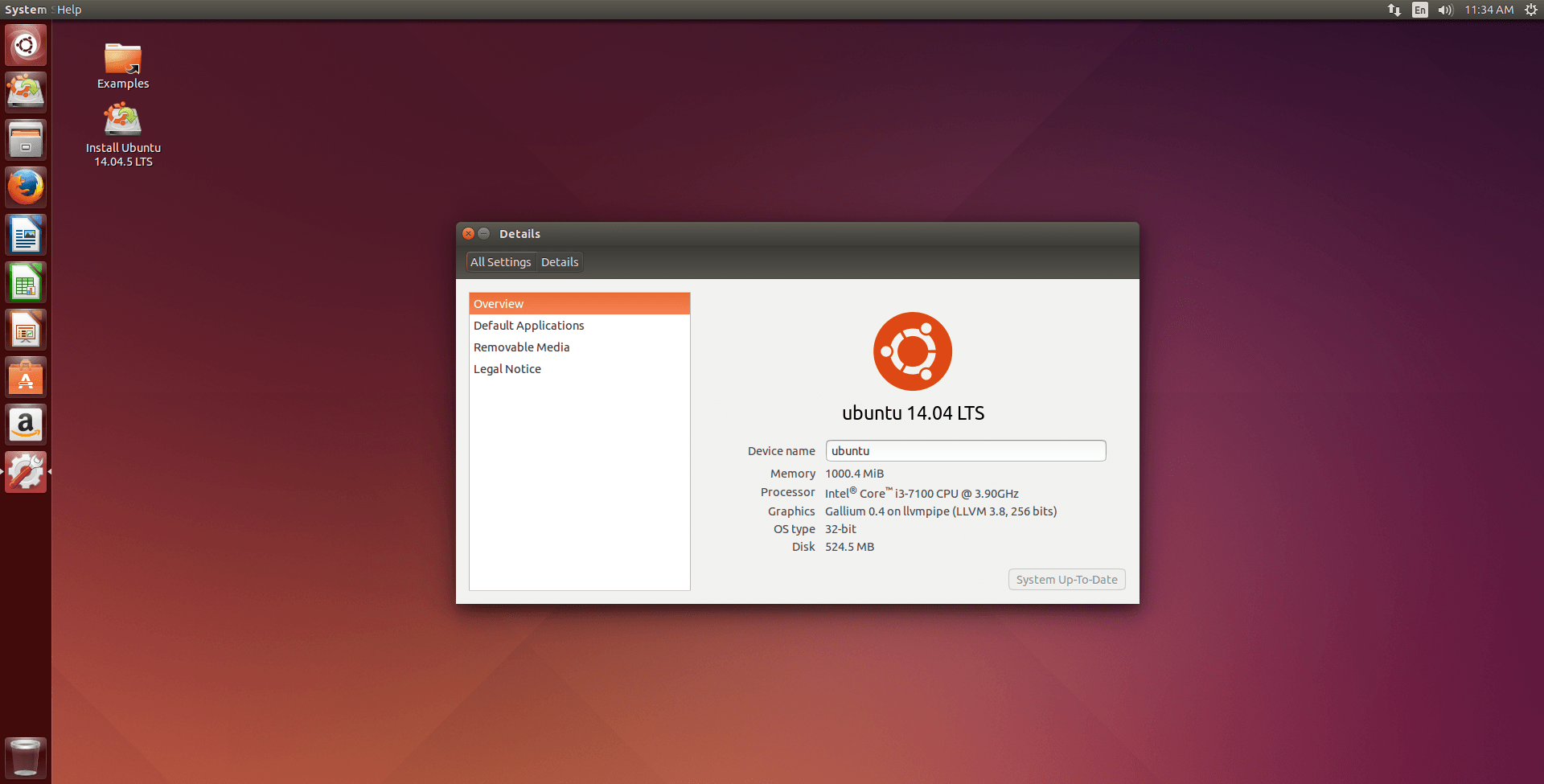

- Download ubuntu 14.04 headless server install#
- Download ubuntu 14.04 headless server update#
- Download ubuntu 14.04 headless server upgrade#
- Download ubuntu 14.04 headless server software#
- Download ubuntu 14.04 headless server password#
Select "Physical Volumes" ⇒ "Add a physical volume" ⇒ Select a hard disk. In "Webmin", Select "Hardware" ⇒ "Logical Volume Management". If you have multiple disks (physical volumes), you can configure them into a single logical volume. Goto "Networking" ⇒ "Network Interfaces" ⇒ Click on the network interface to be used ⇒ Select "Static Configuration" and enter the "IP address" and "Netmask" ( 255.255.255.0). You can configure static IP address via webmin too. $ sudo ifdown eth0 // Network Interface Down For example, to set up static IP on the first network card (identified as eth0): # eth0 for the first network card with static IP address To configure your system to use a static IP address, edit the configuration file /etc/network/interfaces. "Network-attached storage (NAS) is file-level computer data storage server connected to a computer network providing data access to a heterogeneous group of clients." Switch on the server (push the "power" button of the server). Push the "power" button of the UPS to supply power to the server.  Halt and power down the server via " sudo shutdown -h now". You can also shutdown the server remotely via Webmin (Goto "System" ⇒ "Bootup and Shutdown" ⇒ "Shutdown System" or "Reboot System"). $ sudo shutdown -r now // Shutdown and restart (r) $ sudo shutdown -h now // Shutdown the machine, halt (h) and "power down" after shutdown To shutdown the machine via a terminal (remotely thru SSH, or local system console): $ sudo apt clean // clean up Shutdown/Restart Server $ sudo du -sh /var/cache/apt/archives // display the cache size
Halt and power down the server via " sudo shutdown -h now". You can also shutdown the server remotely via Webmin (Goto "System" ⇒ "Bootup and Shutdown" ⇒ "Shutdown System" or "Reboot System"). $ sudo shutdown -r now // Shutdown and restart (r) $ sudo shutdown -h now // Shutdown the machine, halt (h) and "power down" after shutdown To shutdown the machine via a terminal (remotely thru SSH, or local system console): $ sudo apt clean // clean up Shutdown/Restart Server $ sudo du -sh /var/cache/apt/archives // display the cache size Download ubuntu 14.04 headless server update#
$ sudo apt autoremove // Update GRUB for kernel changes $ sudo apt purge linux-image-3.19.0-56-generic $ sudo apt purge linux-image-3.19.0-25-generic $ sudo dpkg -list 'linux-image*'|awk ''|grep -v `uname -r` $ sudo purge-old-kernels -y -keep 1 // Purge old kernels except the current one // (for 14.04 LTS)
Download ubuntu 14.04 headless server install#
$ sudo apt install -y byobu // If not installed
Download ubuntu 14.04 headless server software#
To clean-up the server: // Remove old kernel (if "df -h" shows /boot is 100% - no new software can be installed) Install each of the kept-back packages one by one or "sudo apt-get dist-upgrade" // The following packages have been kept back. $ sudo apt full-upgrade // or "sudo do-release-upgrade" Not recommended for production system. Run the actual software upgrade, upgrading to new version if available.
Download ubuntu 14.04 headless server upgrade#
$ sudo apt upgrade // or "sudo apt-get upgrade" $ sudo apt update // or "sudo apt-get update" // Run the actual software upgrade, without upgrading the version. (in /etc/apt/sources.list and /etc/apt/ directory). To apply the latest software patches: // Update (Synchronize) the local package index files Ubuntu uses apt tool for managing software.
Roboot the machine, and login as the system administrator you created earlier. GRUB (GRand Unified Bootloader) is a Multiboot boot loader. Download ubuntu 14.04 headless server password#
Set the root password for MySQL, if LAMP was selected. For packages, select Ubuntu Server, OPEN SSH, LAMP (Linux-Apache-MySQL-PHP), SAMBA (File and Print services for Windows clients), Mail (Local) Server, Postfix (Local) Mail Server, and PostgreSQL. Leave blank for HTTP proxy information. You can check the partitions via " lsblk" (list block devices) command or Webmin later. The installer will create the \boot, \swap and the \ (root) partitions on " sda" (the first disk). For hard disk partition, select "Use entire disk and setup LVM (Logical Volume Manager)". By default, Ubuntu creates but locks up the root user for security. Select "no" to encrypt the home directory. Enter the "username" and "password" for the system administrator. Otherwise, use DHCP (which is the default) for dynamic IP. If you have an static IP number, choose "Configure the network manually". In "Network Configuration", choose your network card ( eth0 for the first network card). Follow the instructions to install the server:. UEFI (Unified Extensible Firmware Interface) is a replacement for BIOS. Boot up the machine from USB or DVD (e.g., Hit F11 for the Boot menu, and choose UEFI Boot from USB. Download the Ubuntu Server installation file into a USB stick (or DVD). Install "Production" Ubuntu Server Installing Ubuntu Server For production, use the latest LTS release. The "LTS" releases will be supported for 5 years while "non-LTS" will be supported for 9 months. For Ubuntu programmers/developers, see " Ubuntu Desktop - How-To". 
This article is meant for installing a "production" Ubuntu server.







 0 kommentar(er)
0 kommentar(er)
